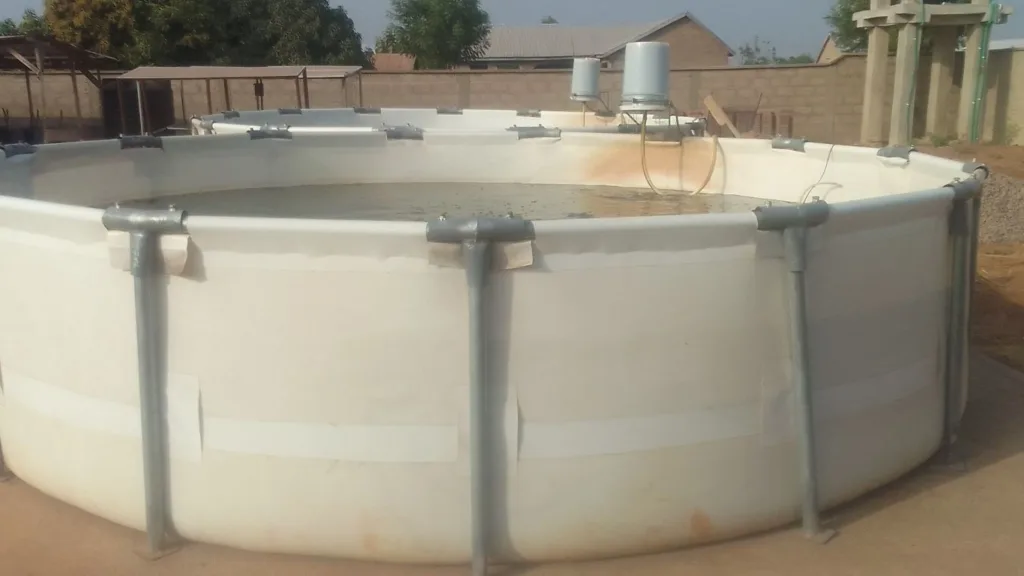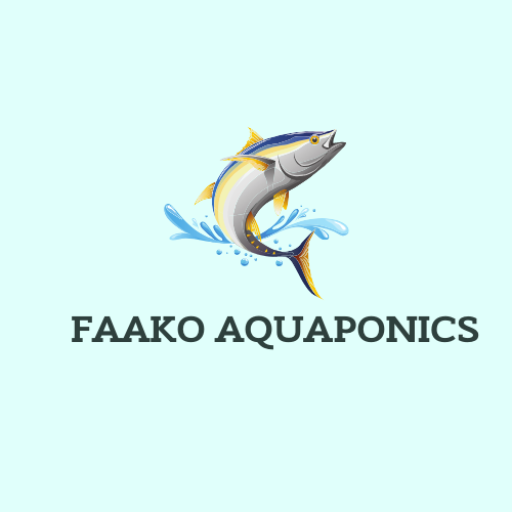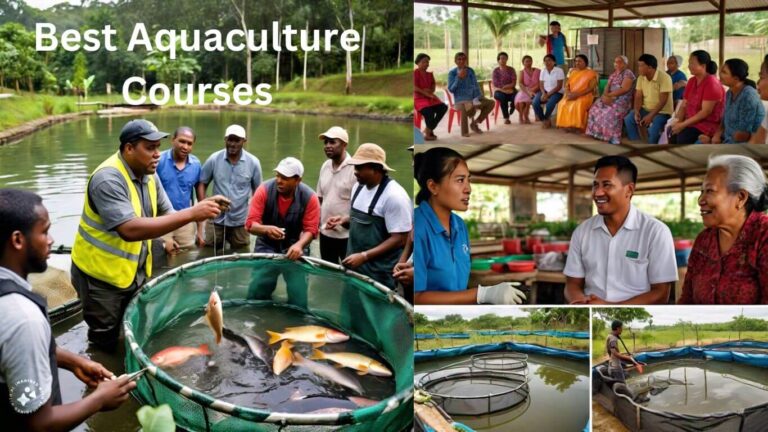Introduction
Urban Fish farming, also known as urban aquaculture, has emerged as a sustainable solution to meet the growing demand for seafood in cities while reducing pressure on wild fish populations. In urban areas with limited space, innovative approaches are essential to maximize productivity while minimizing environmental impact.
This blog post explores the potential of fish farming in urban spaces, focusing on strategies to make the most out of small areas.
The Rise of Urban Fish Farming
Urbanization is a global phenomenon, with more people living in cities than ever. As urban populations continue to grow, so does the demand for food. Urban Fish farming presents a unique opportunity to produce protein-rich food within city limits, reducing the need for long-distance transportation and decreasing carbon emissions associated with food production.
Benefits of Urban Fish Farming
1. Local Food Production
Urban fish farming allows cities to produce their own seafood, reducing reliance on imports and supporting local economies.
By producing your own fish, you have control over how the fish production is done. This includes the type of feed and feeding method. The source of the fingerlings and type of fish species are all carefully selected.
2. Resource Efficiency
Urban fish farms can efficiently produce high yields with minimal inputs such as water and land by utilizing small spaces. This is possible because you create room for maximizing small space and resources due to the fact that those resources are scarce.
3. Job Creation
Fish farming operations in urban areas create employment opportunities, particularly in sectors such as aquaculture technology, maintenance, and distribution. Throughout the fish farming process, labor is required at every stage. From breading, fingerling production, fish pond construction, fish feed production, and general fish farm management all require labor. Such a process provides job opportunities to individuals including marginalized groups like women, children, and the disabled.
4. Educational Opportunities
Urban fish farming can serve as an educational hub, teaching city dwellers about sustainable food production and aquatic ecosystems. It also serves as a research and educational center for schools offering fisheries and aquaculture programs.
Challenges of Urban Fish Farming
While urban fish farming offers numerous benefits, it also presents unique challenges that must be addressed to ensure sustainability and success.
Space Constraints
Urban areas are often characterized by limited space, making it challenging to establish large-scale fish farming operations. However, innovative farming techniques such as vertical aquaponics and rooftop ponds can help maximize space utilization.
Environmental Impact
Intensive fish farming can lead to environmental degradation, including water pollution, land degradation, and habitat destruction. Urban fish farming must implement sustainable practices such as Recirculation Aquaculture Systems (RAS) and organic waste management to minimize their ecological footprint. During earthen fish pond construction, farmers must be careful not to cause erosion.
Regulatory Difficulties
Navigating regulatory frameworks can be complex, particularly in densely populated urban areas. Fish farmers must comply with zoning regulations, environmental permits, and food safety standards to operate legally and responsibly.
Maximizing Small Areas: Strategies for Success
Despite the challenges, there are several strategies that urban fish farmers can employ to maximize productivity in small areas.
Vertical Aquaponics Systems
Vertical aquaponics systems utilize vertical space to grow fish and plants simultaneously. By stacking multiple layers of aquaculture tanks above hydroponic beds, farmers can maximize production in a compact footprint. In this method, two birds are killed with one stone. At the end of the day, you get fish and at the same time get crops such as vegetables.
Rooftop Ponds
Rooftop ponds are another innovative solution for urban fish farming. By utilizing underutilized rooftop spaces, farmers can create small-scale aquaculture systems that take advantage of natural sunlight and rainwater.
When your building is decked, you can simply and easily create tarpaulin fish pond(s), mount it on the building, and produce your fish.
Intensive Fish Farming Techniques
Intensive fish farming techniques such as Recirculating Aquaculture Systems (RAS) allow farmers to produce high yields in limited space. These closed-loop systems recirculate water, removing the need for large water bodies and minimizing environmental impact.
This system makes good use of limited water available since the water is reused. When using the RAS system, you don’t need to always change the water therefore maximizing the water.
The system also prevents the fish farm from smelling. When you are not using RAS, you need to change the pond water mostly every week depending on the size of the pond and fish in it. Otherwise, the place will smell bad. But with RAS, you don’t change the water unless there is an issue that necessitates you to change yet the water will not smell. That is why the RAS system is ideal for urban fish farming.
Collaboration with Urban Agriculture
Collaborating with urban agriculture initiatives can help maximize space utilization and resource efficiency. Fish waste from aquaculture operations can be used to fertilize urban gardens, creating a symbiotic relationship between fish farming and plant cultivation. Either through aquaponics or just normal soil gardens can use fish waste as fertilizer for growth.
Case Study 1: Urban Fish Farm in New York City
To illustrate the potential of urban fish farming, let’s take a closer look at a real-life example. The Riverpark Farm in New York City.
Overview
Riverpark Farm is a one-acre urban farm located in Manhattan’s Kips Bay neighborhood. In addition to growing vegetables and herbs, the farm features a 6,000-gallon fish tank that produces freshwater tilapia.
Innovative Design
The fish tank at Riverpark Farm is integrated into the farm’s overall design, showcasing how aquaculture can be seamlessly integrated into urban agriculture.
The farm utilizes aquaponics, a sustainable farming method that combines aquaculture with hydroponics, to maximize productivity in limited space.
Community Engagement
Riverpark Farm serves as a community hub, offering educational programs and workshops on sustainable agriculture and aquaculture. Visitors can learn about the farm’s operations and participate in hands-on activities such as fish feeding and harvesting.
Environmental Impact
By producing food locally and sustainably, Riverpark Farm helps reduce the carbon footprint associated with food transportation.
The farm’s closed-loop aquaponics system minimizes water usage and eliminates the need for synthetic fertilizers, further reducing its environmental impact.
Case Study 2 – Fisherman’s Fish in Kumasi, Ghana
Fisherman’s Fish is an urban fish farm in the Ashanti Region of Ghana – Kumasi. The farm has 12 tarpaulin fish ponds which have 1000 fish capacity each.
Fisherman’s fish produces tonnes of fish including catfish and tilapia. They produce and sell both fresh and smoked fish.
It has provided job opportunities to over 10 people, therefore. All the fish ponds use the RAS system therefore making it useful and conducive for urban areas like Kumasi.
Case Study 3 – Faako Aquaponics in Tamale, Ghana
Faako Aquaponics as established an urban fish farming hub which is made up of two tarpaulin fish pond. Each pond take over 1000 fish. Faako Aquaponics produces catfish every 6 months from the pond. Some of the fish are smoked whiles others are sold fresh.
The farm also uses the Recirculating Aquaculture System (RAS) which makes it environmental friendly for urban areas and cities like Tamale.

Conclusion
Urban fish farming holds immense potential for meeting the food needs of rapidly growing cities while promoting sustainability and resilience.
By embracing innovative techniques and collaborating with local communities, urban fish farmers can maximize productivity in small areas while minimizing environmental impact. As we continue to confront the challenges of urbanization and climate change, aquaculture will play an increasingly important role in building a more resilient food system for future generations. Check out this post.





